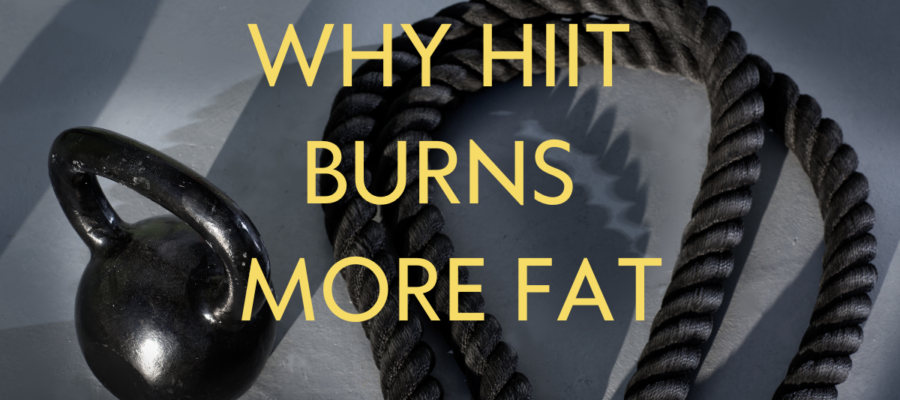Introduction
High-Intensity Interval Training (HIIT) has gained immense popularity in the fitness world, and for good reason. This form of exercise is known to maximize fat burning and promote weight loss more effectively than traditional low-intensity workouts like walking. But what exactly is HIIT, and why does it have such a powerful impact on our bodies?
To understand the science behind why HIIT burns more fat than walking, we need to take a look at the metabolic effects. Unlike steady-state cardio exercises like walking, HIIT involves alternating periods of high-intensity exercise with short recovery periods. This constant switch between intense bursts of activity and brief rest periods challenges our cardiovascular system and engages multiple muscle groups simultaneously.
Energy Demands – Why HIIT Burns More Fat
During a high-intensity interval workout, our body’s energy demands increase significantly. As a result, our metabolism shifts into overdrive to meet this demand. The body taps into its stored glycogen reserves, breaking them down to produce energy for the intense bursts of exercise. This process not only burns calories but also triggers a cascade of metabolic adaptations that continue even after the workout session ends.
What is EPOC?
One key metabolic effect of HIIT is called excess post-exercise oxygen consumption (EPOC), commonly known as the “afterburn effect.” After an intense workout, our body needs extra oxygen to restore normalcy and repair damaged tissues. As a result, our metabolism remains elevated long after we finish exercising, allowing us to burn additional calories throughout the day.
Compared to walking or other low-intensity exercises, HIIT stimulates greater muscle activation due to its explosive nature. The rapid contractions during high-intensity intervals engage both fast-twitch and slow-twitch muscle fibers, resulting in increased muscle strength and endurance over time. Additionally, these intense bursts of activity trigger the release of growth hormone and testosterone – hormones that play a crucial role in building lean muscle mass.
Metabolic Effects of HIIT
High-Intensity Interval Training (HIIT) has gained popularity in recent years due to its effectiveness in burning fat and promoting weight loss. One of the reasons behind its success lies in its metabolic effects. When engaging in HIIT workouts, the body undergoes several physiological changes that contribute to increased fat burning.
The afterburn effect occurs because HIIT workouts deplete glycogen stores in the muscles, which need to be replenished during recovery. To restore glycogen levels and repair muscle tissue, the body requires additional energy even after exercising. This means that even when you’re done with your HIIT session, your body continues to burn calories at an elevated rate for hours afterward.
EPOC Elevates after HIIT
Studies have shown that HIIT can significantly increase EPOC compared to steady-state exercises like walking. A study published in the Journal of Obesity found that participants who engaged in HIIT had a 9% higher EPOC than those who performed moderate-intensity continuous exercise. This suggests that HIIT is more effective at boosting metabolism and increasing fat burning compared to traditional forms of exercise like walking.
In addition to these metabolic effects, HIIT also stimulates the production of growth hormone (GH). GH plays a crucial role in fat metabolism by promoting lipolysis, which is the breakdown of stored fat for energy. This means that HIIT not only burns calories during the workout but also taps into fat stores to fuel the intense bursts of activity.
Another benefit of HIIT is its ability to preserve lean muscle mass while promoting fat loss. Traditional steady-state cardio exercises like walking primarily burn calories from both fat and muscle tissue. However, HIIT workouts prioritize the use of stored fat as fuel, minimizing the risk of muscle loss.
Benefits of HIIT for Fat Burning and Weight Loss
High-Intensity Interval Training (HIIT) has gained popularity in recent years due to its effectiveness in burning fat and promoting weight loss. This form of exercise involves short bursts of intense activity followed by brief recovery periods. The benefits of HIIT for fat burning and weight loss are numerous and backed by scientific research.
In addition to its direct impact on fat burning and weight loss, HIIT offers several other benefits. It improves cardiovascular fitness, enhances insulin sensitivity, and boosts overall endurance. HIIT workouts are also time-efficient, making them a great option for individuals with busy schedules.
To maximize the fat-burning potential of HIIT, it is crucial to focus on intensity and duration. The high-intensity intervals should be challenging enough to push your limits and elevate your heart rate significantly. Aim for at least 20 minutes of HIIT per session, including warm-up and cool-down periods.
Conclusion

In conclusion, the science behind HIIT reveals its incredible benefits for fat burning and weight loss. By incorporating high-intensity intervals into your fitness routine, you can maximize your fat burning potential and achieve your weight loss goals more efficiently than with traditional walking exercises. The metabolic effects of HIIT are remarkable, as it boosts your metabolism and increases the number of calories burned both during and after the workout. Compared to walking, HIIT offers a superior fat burning potential due to its ability to stimulate the release of fatty acids from adipose tissue. This results in greater fat oxidation and ultimately leads to a reduction in body fat percentage.
Further Reading
How to Incorporate Interval Training for Cardio, Weight Loss, and Performance Gains
What is Functional Fitness? A Quick Examination of its Definitions and Benefits







